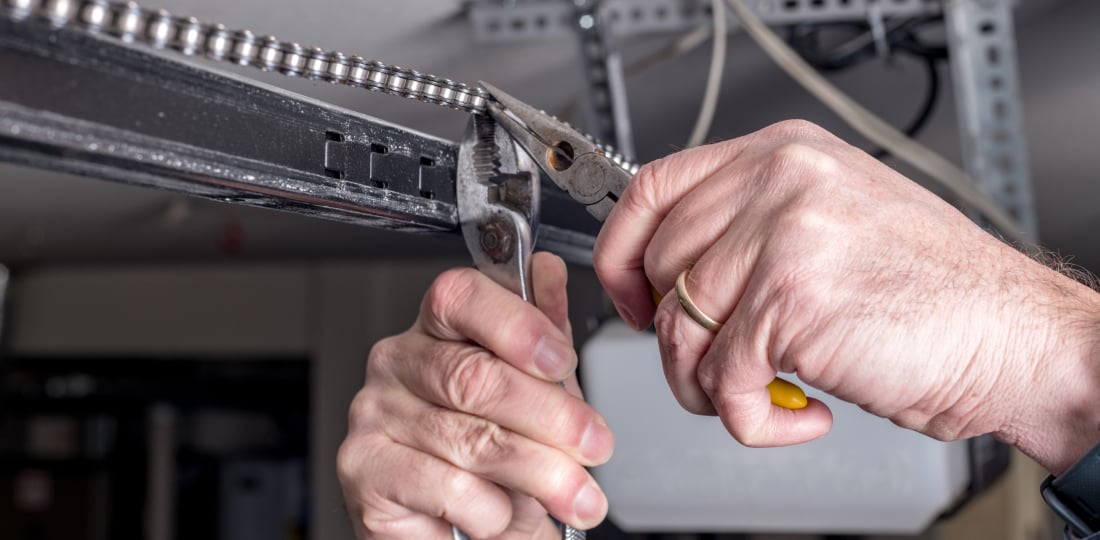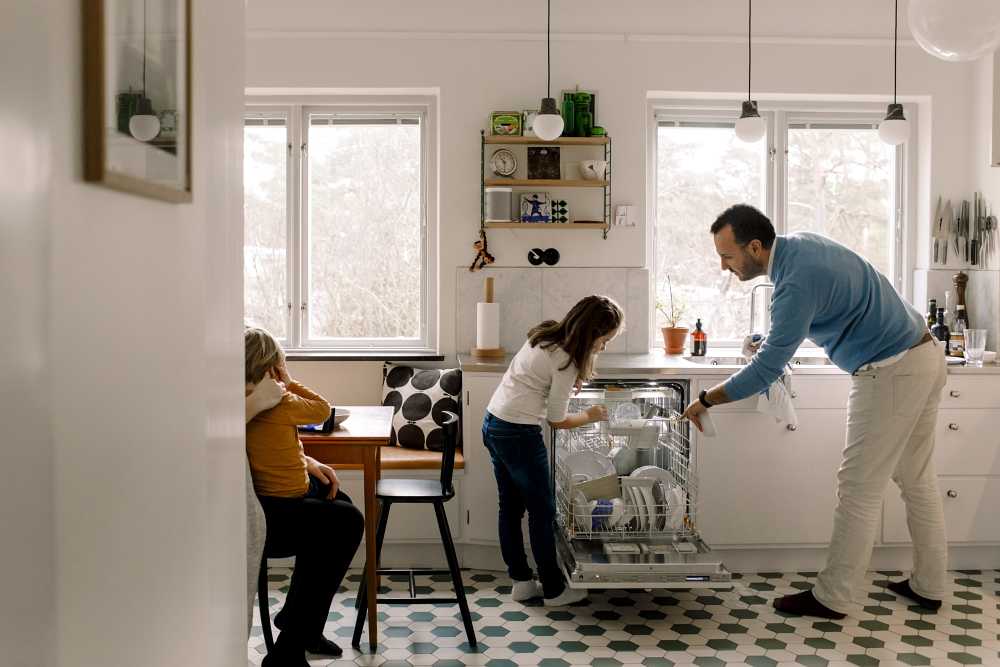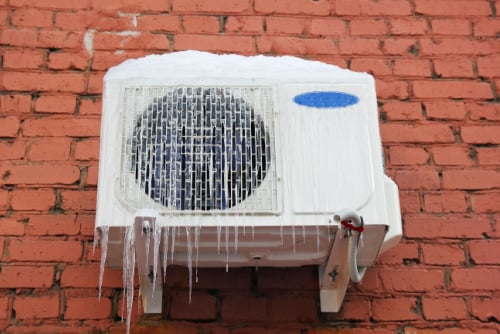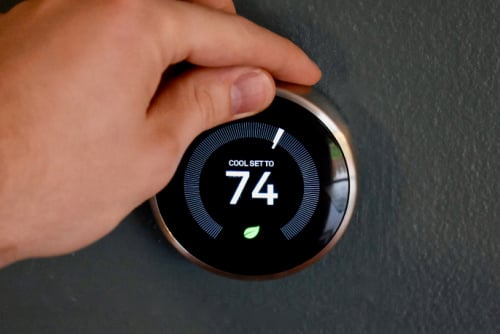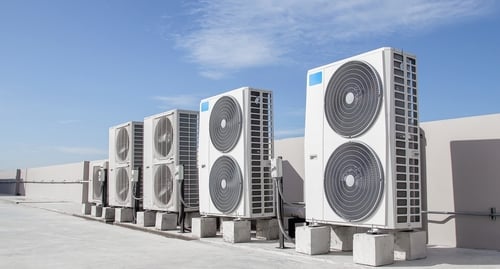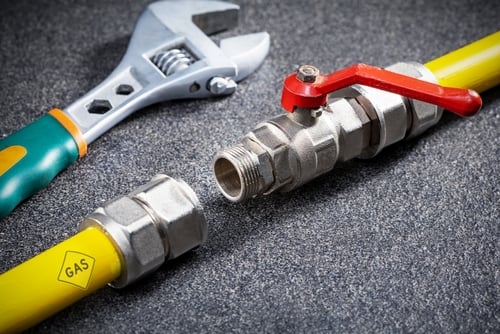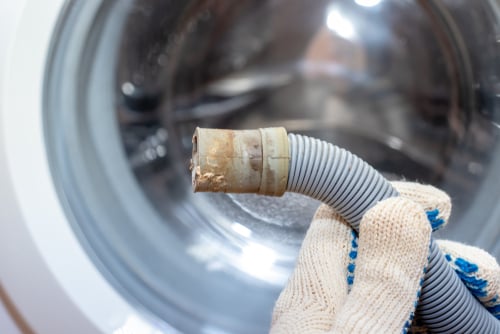Tips For Getting Stubborn Doors Unstuck
As a homeowner, you want everything in your home to be in perfect working order. So when something goes wrong in the garage, it’s a frustrating experience. If you’re like most people, a problem in the garage usually stems back to the garage door. If the garage door is clattering, rattling, jammed, or allowing water to seep underneath, it’s time for a repair!
At Frontdoor®, we want every homeowner to have the tools, knowledge, and resources necessary to tackle just about every project on their own—garage doors included. That’s why we’ve developed this guide!
While you can call a service professional to help, you can often save time and money by doing it yourself! Depending on your experience level and the severity of the problem, you could manage to fix the problem in less than half an hour.
Take note, though: If you feel at all uncomfortable, call a professional. Garage doors contain springs and cables under high tension, and these can cause serious injury if they’re mishandled.
5 DIY Garage Door Repair Tricks
Here are a few tips to help you repair your garage door without help from a service professional:
1. Change The Remote Batteries And Wipe Off The Garage Door Sensors
If your garage door refuses to open or close, start by changing the batteries in your opener remote. Oftentimes, this is the source of the problem.
If that doesn’t work, clean electric eye sensors at the bottom of the door. Use a soft, microfiber cloth to remove any dirt or grime.
Finally, check whether the sensors are out of alignment. If they aren’t facing each other, straighten them.
2. Tighten Nuts, Bolts And Hinges To Fix Clattering And Rattling
If your garage door rattles or clatters, you may need to tighten the hardware, which gradually loosen with use and temperature fluctuations. Here’s what to do:
- Tighten the bolts that fasten your rails to the support brackets.
- Check your roller brackets for signs of wear.
- If you notice wear in your lower roller bracket, call a professional to replace it. The lower bracket contains a high-tension cable, and this can cause bodily harm to inexperienced individuals.
3. Lubricate The Moving Parts
Your garage door relies on well-lubricated components to slide up and down on a regular basis. If you hear loud squealing, squeaking, or shrieking when your garage door is in use, it’s time for a tune-up!
Here’s how to properly lubricate your garage door:
- Use a lithium-based garage door lubricant (usually in a spray can) to spritz the garage door hinges where they meet the bend in the track.
- If you have metal rollers, use the spray can’s thin hose attachment to spritz the lubricant inside the rollers to reach the ball bearings. Note: Do not lubricate nylon rollers.
- Lubricate the springs at the top of your garage door thoroughly. Spray around the outside of the springs, then spray inside the bearing plates.
- Open and close the door multiple times to spread the grease around.
Note: If you ever have trouble locking and unlocking your garage door, spray lubricant into the keyhole.
4. Clean The Tracks
If your garage door still doesn’t open after the above steps, check your tracks. Over time, they can collect dirt, debris, and grime, and this can block them from moving properly.
Here’s how to clean your tracks properly:
- Close the garage door.
- Apply automotive brake cleaner to a clean, soft rag.
- Use the rag to wipe the tracks, reapplying brake cleaner as necessary.
Note: You can clean the tracks with your garage door open, but you should first lock it in place with a C-clamp to prevent it from moving.
5. Replace The Weather Seal
The weather seal is designed to keep wind, rain, and debris from slipping under the bottom of your door. If you see water leaking or leaves poking from underneath the door, it’s time to swap out your weather seal!
Replacing the seal is relatively straightforward, but here’s what you should know: Most garage doors used a U-shaped astragal, and these are sized according to how wide they are when the door is closed and the astragal is squeezed flat.
The above DIY tips are for informational purposes only.
Find Expert Support for Garage Door Repairs And More
If you still need help with garage door repairs, download the Frontdoor App to talk to an expert in real-time!
To dig into more topics, explore the rest of our How-to Tips for time-saving home repair and maintenance checklists.
Frontdoor assumes no responsibility, and specifically disclaims all liability, for your use of any and all information contained herein.
Was this article helpful?
